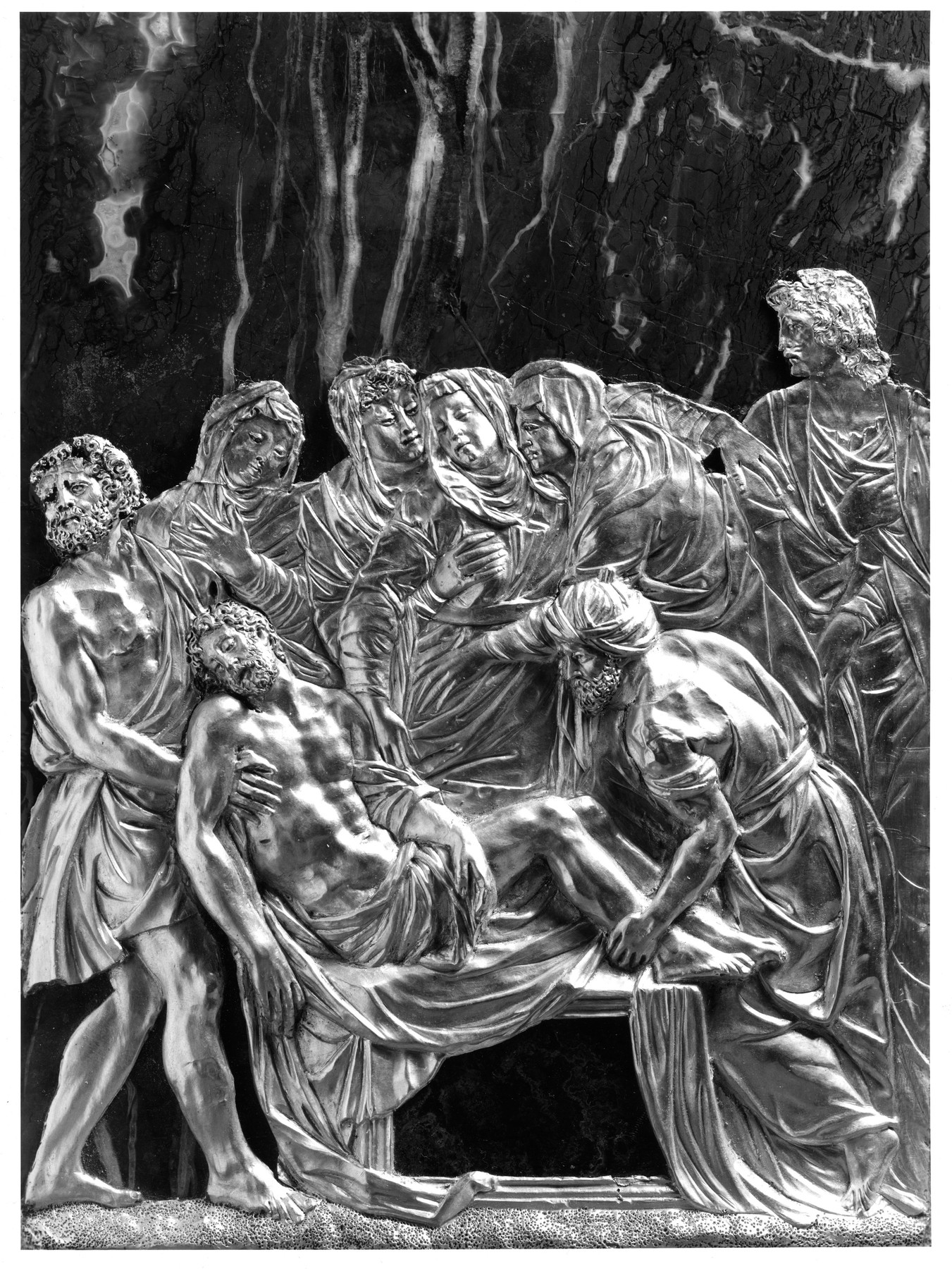Appliqué with the Entombment
(Renaissance Europe )
Made from a paper-thin sheet of gold, this appliqué (to be applied to another surface such as marble or jasper) is executed in repoussé (pressed out from the back). It is a virtuoso piece by Cesare Targone, a goldsmith born in Venice who was active primarily in Rome and Florence during the late 16th century. This precious work may have been executed while Targone was in Rome, which would explain why it is stylistically close to the art of Guglielmo della Porta.
The use of gold indicates that the artist and patron wanted a relief of the utmost sumptuousness and delicacy. Pure gold is rarely used because it is very soft, making it impractical for objects that sustain pressure; indeed the faces of some of the women have been slightly flattened.
Provenance
Provenance (from the French provenir, 'to come from/forth') is the chronology of the ownership, custody, or location of a historical object. Learn more about provenance at the Walters.
Henry Walters, Baltimore [date and mode of acquisition unknown]; Walters Art Museum, 1931, by bequest.
Exhibitions
| 1971-1972 | World of Wonder. The Walters Art Gallery, Baltimore. |
Geographies
Italy, Florence
(Place of Origin)
Italy, Rome (Place of Discovery)
Measurements
H with base: 10 9/16 × W: 7 1/16 × D: 7/8 in. (26.8 × 18 × 2.3 cm)
Credit Line
Acquired by Henry Walters
Location in Museum
Accession Number
In libraries, galleries, museums, and archives, an accession number is a unique identifier assigned to each object in the collection.
In libraries, galleries, museums, and archives, an accession number is a unique identifier assigned to each object in the collection.
57.564




